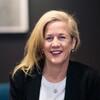Check out what is new in Poultry Industry
Find the best technical articles, forums, and videos on Poultry Industry at Engormix. Enter now and interact with the world's largest agricultural social network.
In 2022 mycotoxins annual survey, Life Rainbow Biotech randomly collected 342 feed samples of raw materials and feed mills in farms and analyzed. The samples were tested for aflatoxins (B1, B2, G1, and G2), zearalenone, fumonisins (B1, B2, and B3) and deoxynivalenol (DON) by the ELISA Mycotoxin analysis kit. Results: From January to December 2022, the import volume of feed corn was 4,383 thousand tons, and Brazil and Argentina is 32.05% and 31.27%, followed by South Africa...
Comments : 0
Recommendations: 1
Important data:
Cobb Chicken: 500
Weight at birth: 42 gr
Weight at 25 days: 2000 gr
Average daily weight gain: 78.32 gr
Dr. Jovanir Inés Muller Fernandes, associate professor at the UFPR Palotina...
Comments : 9
Recommendations: 1
The importance of phytogenic and nutraceutical solutions based in botanical compounds and natural ingredients for the prevention of diseases lies in the fact that there are more than 10.000 plants with medicinal properties that can be found in nature: a huge variety of natural sources of...
Comments : 0
Recommendations: 2
.jpg&w=3840&q=75)
DON-V ONE is the world's first fully quantitative lateral flow strip test for finished feeds and pet foods. Available in two test ranges: 0-10 ppm (LOD: 0.2 ppm) and 0-40 pppm (LOD: 0.8 ppm), DON-V ONE works along with the Vertu TOUCH reader and Vertu PREP mixer to enable on-site and laboratory detection in virtually any finished feed or pet food formulation....
Comments : 0
Recommendations: 1

PhytriCare® IM is a plant-based premix with a high flavonoid content. It has been developed to prevent a too high inflammatory state in sows, laying hens, and dairy cows....
Comments : 1
Recommendations: 0
.jpg&w=3840&q=75)
What is Evonik's pledge to assist the animal industry to realize sustainable production? Listen to Faazi Adam’s remarks from Evonik on this subject....
Comments : 0
Recommendations: 3
Introduction Feed ingredients and manufacturing are expensive components of integrated poultry production, sometimes reaching 70% of total operational costs. Fortunately, the added costs of manufacturing poultry feed improve feed efficiency and poultry performance. The performance benefits from feeding pelleted diets results in a positive return on investment, making it a common practice in broiler and turkey production. Improving the quality of pellets further enhances poultry...
Comments : 1
Recommendations: 3
Introduction Nepal’s poultry industry has seen a significant and rapid growth in the last decade, contributing more than 4% to the national gross domestic product (GDP) [1,2]. Majority of the poultry products are supplied by numerous commercial farms (54% of total poultry production) scattered throughout the country. Backyard poultry also accounts for significant proportion of the total poultry production (46%); poultry meat and eggs are an easy source for protein and...
Comments : 0
Recommendations: 1


Low Protein Diets Downregulate Hepatic Enzymes Responsible for Nonessential Amino Acid Synthesis in Broilers
Suggested link
.jpg&w=3840&q=75)
Ronnick Fong, Executive director at Hangzhou De Mark Industrial, talks about the benefits of Magicoh Pellet Binder, a spray-dried urea-formaldehyde resin in powder form, that provides a cost-efficient solution to your binding requirements....
Comments : 1
Recommendations: 2
Waters Corporation introduces Glyphosate-V, the world’s first lateral flow strip test for fully quantitative detection of Glyphosate in grains and water samples
New product...
Comments : 0
Recommendations: 0
.jpg&w=3840&q=75)
Is it possible to achieve animal health with nutraceutical and phytogenics solutions?
*Certain information associated with products, their composition and claims may be different depending on the geographical region and may not be applicable in all countries. Liptosa reserves the right to adapt to the requirements and legislation in each case.
The information and technical recommendations provided herein are based on Liptosa's current knowledge and experience.
Liptosa reserves the right to...
Comments : 0
Recommendations: 3
We appreciate the work you do in keeping our food supply safe. In an effort to continue and improve the tools and technologies used in this endeavor, we kindly as you to share your expertise and input on how various food safety tests are performed in your organization. Through the survey below, we’ll explore your thoughts and operations around food safety testing programs from commodities to final product. The survey takes approximately 15 minutes to complete.
We realize food...
Comments : 0
Recommendations: 1
Components of Gut Health The intestine is a complex organ that comprises regions with distinct structural and physiological functions specialized in digestion and nutrient absorption. Simultaneously, the gut represents the primary contact site with foreign antigens and pathogens that can enter, reside and disseminate to the internal organs. For this reason, the gut harbors the majority of immune cells, referred to as gut-associated lymphoid tissues, when compared to other tissues....
Comments : 0
Recommendations: 3
An engaging program
This year’s program was carefully designed to feature relevant and engaging presentations on the theme of “Strengthening the Nutritional Foundation for Animal and Industry Resiliency”. Experts in their fields will present on innovations in livestock nutrition for both major and minor livestock species and offer significant takeaways that attendees can apply to their daily roles in the industry.
...
Comments : 1
Recommendations: 0
INTRODUCTION Feed cost accounts for approximately 60 to 70% of total production cost in the egg industry (Wilkinson, 2018). Out of this, 85% correlates to the energy and protein content of the laying hen diet (Santana et al., 2018). While reducing crude protein ( CP ) levels in diets may offer some advantages for the environment and reduce the feed cost, maintaining the birds’ digestive health and development performance is difficult. With the addition of synthetic...
Comments : 0
Recommendations: 2
Human-animal interaction is the mutual and dynamic relationship between a human and an animal where the animal perceives human interaction as degree of relatedness or distance and vice-versa. Human beings have domesticated poultry species for eggs and meat production. Domestication has favored tameness in animals, however,...
Comments : 0
Recommendations: 0
Background Biofortifications of chicken with bioactive nutrients such as DHA and calcidiol [25(OH)D3] have been viewed as an effective strategy to produce health-promoting meat for human consumption [1, 2]. Relatively low to moderate inclusion levels of calcidiol (1600 to 2800 IU/kg diet) [3, 4] and DHA-rich microalgal biomass or oil (0.55 to 2.55 g DHA/kg diet) [5–7] in broiler diets caused no negative effects on growth performance, lipid profile of tissues, or...
Comments : 0
Recommendations: 0
Q: Can you tell us how you arrived at the proposed optimal ratios and amounts of true digestible AAs in diets that you have developed in your research? A: Results of studies by my group have established the concept that animals have dietary requirements for not only...
Comments : 5
Recommendations: 5

Ewa Sujka shares her point of view about the trends in Organic farming production.
*Certain information associated with products, their composition and claims may be different depending on the geographical region and may not be applicable in all countries. Liptosa reserves the right to adapt to the requirements and legislation in each case.
The information and technical recommendations provided herein are based on Liptosa's current knowledge and experience.
Liptosa reserves the right to...
Comments : 1
Recommendations: 5
Conventional broiler (meat) chickens reach a final weight of 6.6 lbs (3 kg) in approximately 40-44 days. Across their lifetime, these fast-growing birds gain an average of 68-75 g per day, with daily gain increasing with age (Aviagen, 2022; Cobb, 2022). With their fast growth, however, they...
Comments : 0
Recommendations: 0

.jpg&w=3840&q=75)











.jpg&w=3840&q=75)


















